1894 Building Boasts New Orleans-Style Bar
New Brass Alley on Third St. has spent heavily on atmosphere. Evolution ping pong bar is on 2nd floor.
The area near the site for the new Milwaukee Bucks‘ arena is drawing increasing scrutiny from investors and visitors as it transitions into an “Entertainment District.” One concern voiced in the community is that the future of the area will be chock-full of chain restaurants and other corporate gimmicky places.
Last month, Milwaukee saw the opening of a home-grown tourist attraction that shows this city can raise sufficient capital on its own to open an entertainment destination with full tourist-ready creds. No chain needed!
Welcome to The Brass Alley, a first floor tavern/restaurant that claims to bring “the excitement of Bourbon Street to Old World Third Street in Downtown Milwaukee.” Upstairs is Evolution MKE, a reincarnation of a ping-pong parlor that had operated for some years in the Historic Third Ward.
The two share quarters, and a single tavern license at 1023 N. Old World Third St., in an 1894 building that had never been a tavern until Bootleggers was installed there in 2008. It also served as Whiskey River, a tavern that closed in 2011. That failure was followed by the Irish Rec Room.
Finally, after some months of considerable reconstruction, The Brass Alley and Evolution MKE opened in October. The partners behind the establishment are involved in other operations in town including McGillicuddy’s, the Red Rock Saloon, the Red Lion Pub and Trocadero. They appear to be well capitalized, and own the building, which they bought earlier this year for $970,000 from Wells Fargo Bank, which got stuck with it in a $1.75 million foreclosure.
The partners are also not shy about putting money into their establishments, and it shows in the interior of The Brass Alley in particular, where the level of construction of fixtures, fittings, etcetera, surpasses the average here — even from large national chains.
There are wrought iron finials on a railing in a back room, and a New Orleans style lamp to light the way to a plausible reproduction of a Crescent City fountain and crumbling brick wall. The only false note here (except for the fact that the wall is not actually crumbling, as it would be in New Orleans) is the fake ivy that climbs the walls. The fountain and seating behind the railing is on a raised platform, which it shares with a small stage that opens onto a freight elevator, a remnant of the building’s semi-industrial past. Two vintage decorative wooden brackets appear consistent with those to be found on New Orleans porches, right down to the decayed surfaces.
The back room is surmounted by a faux-arcade such as you would find in the Vieux Carre, and creates a homey indoor-outdoor feeling for the place. The ceilings are high, and are exposed. The floor is oak. The front room, with its generous windows looking out over Old World Third Street and the venerable Usinger’s Sausage factory across the street, is a clean, composed space, with original paintings of New Orleansy subjects. A sign on the wall announces a Jazz Brunch on the weekends.
The two rooms, measuring over 5,000 square feet in total, are connected by a rather clever bar set up. The front room’s bar runs parallel to the street, with a little cubbyhole on the north end where the bar continues at right angles, running north-south in the back room. One bartender could service both rooms during slow times, while during busy times bartenders could easily transfer from one bar to the other with a minimum of lost time. It seems as if the place could run pretty well under pressure. Business in tourist entertainment districts tends to ebb and flow depending on the schedule of events at nearby destinations like the Bradley Center.
Upstairs, Evolution MKE is a more diaphanous, airy place. The single bar is located in the back of the room and seats maybe ten or so. But you’re not here to sit, not with all of those ping pong tables (ten of them) in the room. A bin of orange balls is the first thing to greet you when you climb up the stairs to this space. Above is a rooftop deck — fully two floors from where the roof was originally when the building was constructed in 1894.
Once Was Four Story Building
This 38 foot by 120 foot, two-story building on a double lot was once a four story structure, and it was over 110 years old before it first housed a tavern.
It was designed by architect Carl F. Ringer, Sr. [1850-1939], who also built the Fred Vogel building at 231 E. Buffalo St. and other Milwaukee structures, including a portion of the unlamented Pfister & Vogel Tannery on N. Water St., now long gone and replaced by the North End built by Mandel Group. Ringer also served as city building inspector, and was a member of the board of the Harbor Commission, as well as being one of the incorporators of the Milwaukee Vinegar Company.
Ringer was the brother-in-law of Carl Benz, one of the designers of the Mercedes Benz automobiles. In the 1888 Bertha Benz, the architect’s sister, was the first person on earth to drive an automobile for any considerable distance when she grabbed her two teenaged sons without telling her husband, or getting permission from authorities and drove the 66 miles from Mannheim to Pforzheim, Germany. That first drive in a car was also the first unauthorized use of a motor vehicle, it appears.
But back to Milwaukee. The Ringer-designed building we are discussing, at what was then 297 Third St., was constructed for Udo Dorestan at a cost of $12,800 for the purpose of the manufacture and sale of “paints, calcimines and varnishes.” Dorestan had started a drug store on the site in 1849, and switched to paints by the 1880s. You could buy your paints, calcimines and varnishes ready-mixed, or whip them up yourself at home. Calcimine was a water-based mixture of chalk and glue and was used as interior paint in the late 1800s to early 1900s. It is hard to remove and virtually impossible to paint over, as those with old homes may have discovered. The material can still be seen in some old plaster ceilings in basements and attics, and has a flat bluish tint to it.
In 1905 a stairway was added somewhere to this building, with the “enclosure to be of solid adamant partition,” according to the building inspector. “Metal, lath, etc.,” were examples of solid, adamant partition components, he helpfully explained. Wood lath would not cut it.
In 1908 the solid adamant partition was tested when a fire raged through the building on January 22nd at 6:12 p.m. August Gallun, a wealthy tanner and then the building’s owner, paid $1,000 to “make necessary repairs” to the structure.
In 1912, when he died, with over $2 million in assets, Gallun owned real estate valued at over $400,000 which brought in income of over $25,000 per year.
In 1913, with Gallun in his grave, fire once again raged in the building, by then owned by the Gallun Estate. It cost $5,000 to fix the damage.
The shop was leased to the National Tea Company in 1921. The firm paid $3,500 to construct a 39-foot by 30-foot addition to the rear of the building, as well as installing a freight elevator powered by “Rosenberg #4 Traction.”
In 1935 the store was the site of the A. J. Strauss Fruit and Meat Market, continuing its grocery usage. Third Street was a busy shopping street back then, with Usinger’s across the street, along with Steinmeyer’s, a fine grocer serving the wealthy German community that abounded in the area. Buehler, Strauss, etc., were a bit more mid-market. Steinmeyer’s remained in business until 1949. It is now the site of the Wisconsin Cheese Mart and its Uber Tap.
In 1935 Inspector Spencer of the City of Milwaukee issued an order for the owner of the building to “provide steps to basement so inspector could enter same.” It is not clear how the basement was accessed in the previous 40 years, but Spencer got his steps. In 1940, Herman Neuman operated a meat market here.
On August 24th, 1945 the building once again caught fire. “Cause unknown,” the inspector wrote. “Started 4th Floor, front part of bldg. Loss: $20,000.” At that time, the building was owned by the First Wisconsin Trust Co. The building was repaired.
With World War II ended, and the old German neighborhood rapidly changing to a fringe portion of downtown, the commercial nature of the street began to change. In October, 1945, the old meat market, where customers would buy their daily roast, became the home of Ben Bar Sales, Inc., merchants of food freezers.
In the atomic postwar era, housewives could fill their freezers with weeks’ worth of meat bought at the large supermarkets that were springing up to meet the demand of the parents of what we now call the baby boomers, and those hungry mouths they had to feed. Nobody had the time anymore to go to a half dozen markets on a daily basis just to make dinner.
Upstairs and in the basement, the Thomas Bentley Co. did boxing and processing of small machine parts. “Five and sometimes more employees working in basement with only one exit,” the inspector noted. This was a serious concern in a building that often ignited, but thus far with no loss of life.
In August, 1947, the First Wisconsin Trust Company altered the storefront of the building, and in September, 1948 the store was leased to N. B. Purdy Products, Co. The firm was permitted to sell soap, but cautioned “no mfg of soap” was to take place in the building. The company employed 4 men and 14 women, which seems like an awfully high number of soap salespeople in one building. The firm, now based in Illinois, is still in business selling specialty cleaning products for the restaurant industry.
By December 1, 1952, the building was owned by Gus Mader, who operated the German Restaurant still in business a few doors to the north.
And, once again, it was time for a fire — this time a big one. “Third and 4th Floor and roof badly damaged by fire, cannot be repaired, will have to be razed,” the inspector wrote after the cinders cooled. “Basement, 1st and 2nd floors are O.K.,” he wrote.
On April 29th, 1953, Mader’s McKinley Investment Co. took out a permit for a $10,000 “new storefront and entrance to 2nd floor.” It cost another $3,500 to raze the top two floors, giving the building the profile it has today.
In December, 1953, with the basements of Milwaukee stocked with electric freezers, the storefront reverted to its old home decorating roots when Wisconsin Floor Covering Company opened a retail linoleum store in the space once occupied by Dorestan and his calcimines. The shop would sell floor coverings for over 30 years.
In August, 1968, Fluegge Optical opened in the building’s second (now top) floor, followed in August 1974 by the William Reilly Academy of Ballet. Reilly had had a long ballet career, working with Jerome Robbins and others in New York and came to the city at the urging of his sister Sheila, for decades the head of the dance program at Marquette University.
In 1977, Gus Mader shelled out $4,000 for a new brick front for the building, which still housed the floor covering company and the ballet academy.
In 1985, Sandra Grueul and Taffnie Bogart received permission to use the second floor as a business space and two family dwelling, including a photo studio, lab, showroom and a total of five bedrooms. It is a big building.
In 1986 the retail shop became Kowalkse’s Floor Store.
In 1990 Gus Mader took over the building he owned and opened the Old World Third Street Gallery, an extension of the Mader’s Gift Shop. Here one could find the largest collection of I. M. Hummel figurines, which Mader’s had been selling since the kitschy cuties were first introduced in 1935. Mader’s also sold beer mugs and steins, along with an extensive catalogue of the numerous photolithographic prints of original paintings by Wisconsin wildlife artist Owen Justus Gromme. The paintings may be worth something today. Those who own the prints believe they have value, too.
Finally, after the 21st century got underway, the building became a saloon. First it was Bootleggers, then Whiskey River and finally the Irish Rec Room before its current incarnation.
Now, let’s go inside and have us one.
On Tap - Sponsored by Lakefront Brewery
- Abita Amber
- Abita IPA
- Abita Purple Haze
- Bud Light
- Coors Light
- Guinness
- Krombacher Pils
- Lafefront Riverwest Stein Beer
- Leinenkugel Seasonal Beer
- Miller Lite
- New Glarus Spotted Cow
- Stella Artois Cidre
The Brass Alley + Evolution MKE
The Verdict
- Trade Name: The Brass Alley [first floor], Evolution MKE [second floor]
- Location: 1023 N. Old World Third Street, Milwaukee
- Neighborhood: Kilbourn Town
- Subdivision: “Original Plat of the Town of Milwaukee West of the River”
- Phone Number: The Brass Alley, 414-800-6240; Evolution MKE, 414-831-7746
- Website: The Brass Alley, http://www.thebrassalley.com/; Evolution MKE, http://www.evolutionmke.com/
- Facebook: The Brass Alley, https://www.facebook.com/thebrassalley/; Evolution MKE, https://www.facebook.com/evolutionmke. Both sites are active.
- Twitter: The Brass Alley, None Found; Evolution MKE https://twitter.com/evolutionmke
- Description: Full Service Restaurant [40% of revenue food sales] and Tavern [60% of revenue alcohol sales]
- Featured Drink: A Sazerac at The Brass Alley helps to convey the New Orleans spirit of the place.
- Capacity: Could not be determined.
- Restrooms: The Brass Alley, Men’s Room 4 urinals 2 stalls; Women’s Room 6 stalls. Evolution MKE, Men’s Room 2 urinals 4 stalls; Women’s Room 7 stalls.
- Year Established: 2015
- Year Building Constructed: 1894
- Estimated Annual Rent: 10,739 square feet at $12.49/s.f.=$134,130 per annum according to City Assessor’s calculations. Application says rent is $10,000 per month, or @120,000 per annum. Property is assessed at $69,900 for the 5,824 square foot lot [$12.00/s.f.] and $900,100 for the 5,824-square-foot building for a total assessed valuation of $970,000. Taxes of $39,250.93 are paid in full. Tavern operator owns property through holding company. Operator purchased building 05/13/2015 for $970,000.
- Property Owner: Evolution Real Estate, LLC; Chad J. Richter, Esq. Registered Agent [O’Neil, Cannon, Hollman, DeJong and Laing, S.C.].
- Business Owner: Susanne M. Mayer [D.O.B. 11/02/1970] Registered Agent, 25.5% Owner. Other owners: Phil Erno, Andrew Deuster, Jeffrey Kovacovich. Partners also members of ownership groups of Red Rock Saloon, McGillycuddy’s, Red Lion Pub, Trocadero.
- Walk Score: 92 out of 100 “Walker’s Paradise.” This is part of the “Entertainment District” that will soon include a new arena. Just a block south of the luxury Moderne Condominiums, home to County Executive Chris Abele.
- Transit Score: 70 out of 100, “Excellent Transit.” Will someday have streetcar extension within a block or so.
- Games of Chance: None Found
- Games of Skill: 10 Ping Pong tables upstairs, if that’s your thing. Entertainment options 3 Amusement Devices
- Trade Name : Evolution MKE
- Aldermanic District: 4; Bob Bauman
- Police District: 1
- Premise Description: First, Second, Rooftop Floors, Parklet and Basement Storage
Hours of Operation
| Is Open? | Day | Open | Close | Expected Customers | Age Restriction |
|---|---|---|---|---|---|
| True | Sun | 10:00AM | 2:00AM | 200 | |
| True | Mon | 11:00AM | 2:00AM | 100 | |
| True | Tue | 11:00AM | 2:00AM | 250 | |
| True | Wed | 11:00AM | 2:00AM | 200 | |
| True | Thu | 11:00AM | 2:00AM | 200 | |
| True | Fri | 11:00AM | 2:30AM | 600 | |
| True | Sat | 10:00AM | 2:30AM | 800 |
Bar Exam
-
Your Office Is New and Truly Unique
 Nov 13th, 2025 by Michael Horne
Nov 13th, 2025 by Michael Horne
-
Sip & Purr Is Unique Cafe and Bar
 May 1st, 2025 by Michael Horne
May 1st, 2025 by Michael Horne
-
Lakefront Brewery’s New Riverwalk Patio
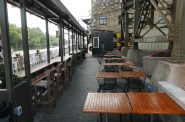 Jul 26th, 2023 by Michael Horne
Jul 26th, 2023 by Michael Horne


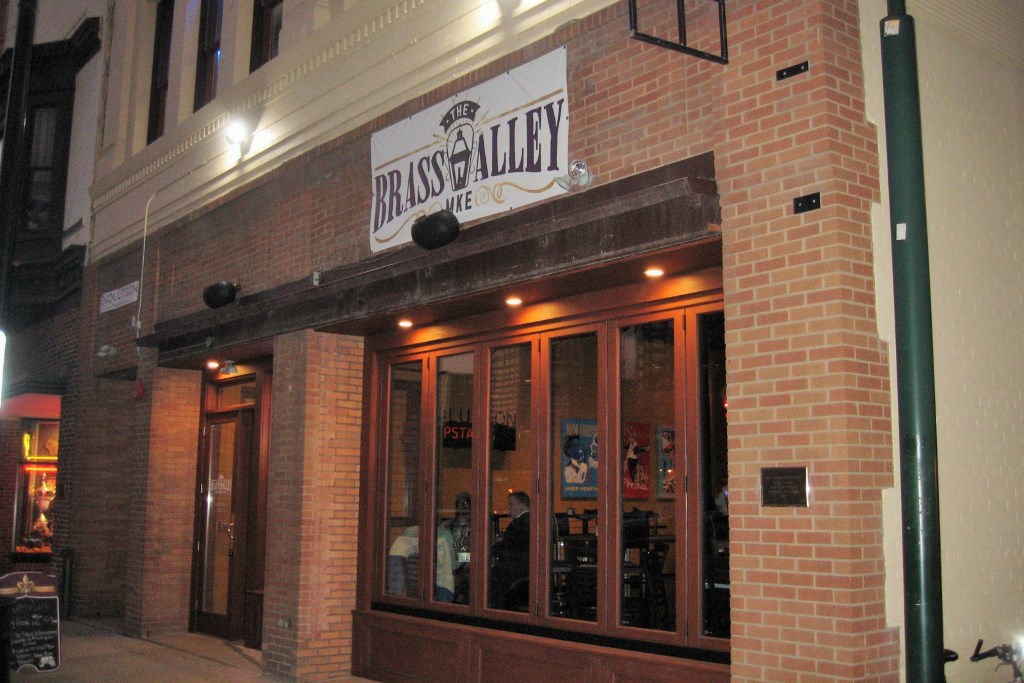
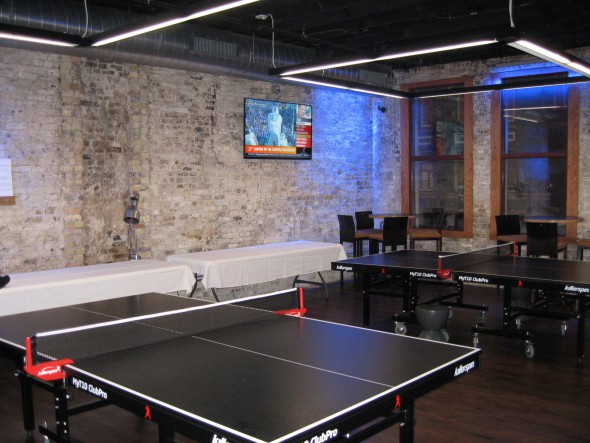
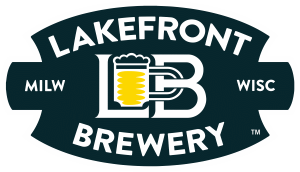
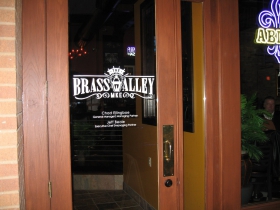
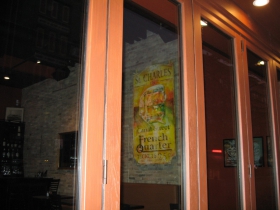
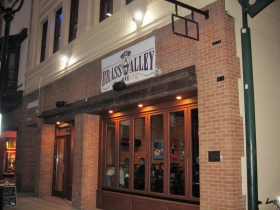
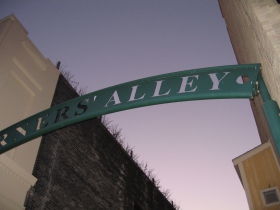
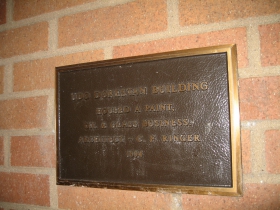
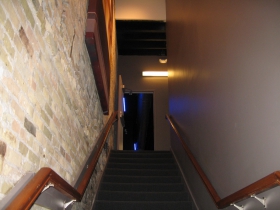




















Man, that is all the detail there could possibly be! Well done! One that I noticed right away, Neighborhood: Kilbourn Town. Yes it is! Thank you for using the proper name. Let’s have no more East Town/Westown genericness.
Juneautown and Kilbourntown, like it was in the beginning.
RE: The area near the site for the new Milwaukee Bucks‘ arena is drawing increasing scrutiny from investors and visitors as it transitions into an “Entertainment District.”
Michael, you make a good point about Third Street & Milwaukee doing just fine with developing home-grown “entertainment destinations.” However, there’s no need for us to let the Bucks or others define our neighborhoods or local commerce for us. By all urban-planning standards, Third Street transitioned into an “entertainment district” (or “destination” or “zone”) decades ago and venerable places like Mader’s have been there over 100 years. (Nearby Water Street has enjoyed that designation only for some 30 years). It’s become a common conceit of some developers to think they are creating “entertainment districts” by wanly imitating what has occurred naturally (and without public subsidies) for eons.
CBS Sunday Morning did a feature on some Chicago dive bars this morning and referenced a book called “Chicago’s Historic Bars.” You’re doing your part in Bar Exam to write Brew City’s own version, week by week. How about working up to a doing printed volume, something both tourists and residents could tuck in a jacket as they make their way on self-guided tours of “Milwaukee’s Best” before they slip away, as many are doing.
While some will strive to create “faux authenticity,” as CBS described it, through E.D.s with often-boring chains, we can all help our inimitable pubs to thrive by continuing to patronize them. Thanks, Michael, for making me want to visit some I’ve not yet entered.
I have a friend who moved to New Orleans for more excitement, whereas we Milwaukeeans, according to your article, can just stay here and go to The Brass Alley! Thanks for the well-researched article, Michael Horne!